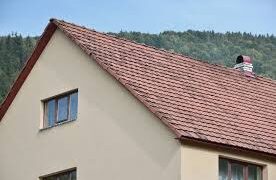Knowing how much snow your roof can handle is essential if you live in a snow-prone area. Accurately measuring your roof’s snow load can help avoid damage to your property and family.
The snow load on a roof is determined by weighing the depth of snow and ice under it. Weight varies depending on the type of snow. Light and fluffy snow weighs less than packed snow.
Prevent Damage
This winter, your roof will receive a lot of snow if you live in a snowy region. This is why it’s critical to assess the snow weight on your top precisely.
If your roof isn’t properly designed to support heavy snow loads, it could cause significant damage to your property. Using a roof snow load measurement can help you determine when to clear it off and prevent damage from happening.
Snow load is a measure of the force that builds up when winter storms pile snow and ice on your roof. This force can result in roof collapses, leaks, and other problems.
Protect Your Family
Accurately measuring the snow load on your roof is a critical part of maintaining the safety and value of your home. In addition to preventing damage to your property, it can also prevent you from having to pay for expensive repairs and replacements.
A good rule of thumb is to measure the load in pounds per square foot. Several reputable online calculators will let you input your details and deliver a quick but accurate estimate of the snow load on your roof.
For the most part, the most important consideration is determining your home’s snow load capacity in advance of the upcoming storm so you know how much snow to expect and where to place it before the big one hits. The experts can help you through this critical and often overwhelming process. The key is to keep your home safe, healthy, and a pleasure to live in for years.
Prevent Damage to Your Roof
Accurately measuring your roof snow load is a crucial step for preventing damage. It lets you know when you should clear the snow off your roof so that it can support the maximum load allowed by your local building code.
Aside from knowing when it is time to remove snow, you should keep your roof in good shape throughout the year. Doing so can help protect your home and family from unpredictable storms, wind, rain, snow, and ice.
Trimming trees is one of the most important ways to prevent roof damage. Tree branches are prone to snapping during heavy rain, snow, and winds, causing them to fall on your roof and cause damage.
Prevent Damage to Your Home
Accurately measuring roof snow load is critical in preventing damage to your home. Even a tiny amount of snow can cause extensive property damage, from roof collapse to water intrusion.
Fresh, light snow weighs about five pounds per square foot, while packed snow can be double that weight. That’s why a few feet of snow can overload the load-bearing capacity of your roof if you don’t clear it promptly.
As roofs age, their capacity to handle snow loads diminishes. This may be because of structural weakness, shingles, other components not supporting the roof properly, or a combination.
Building regulations in your area could stipulate that your roof must be capable of safely supporting a particular amount of snow load. Your roof should be able to withstand some snowfall if it is in good shape and has yet to be repaired or replaced in a while.




